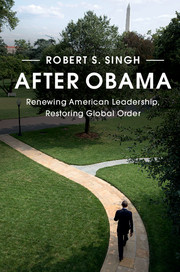Book contents
4 - Reversing declinism: toward a second American century?
Published online by Cambridge University Press: 05 May 2016
Summary
If neither public opinion nor partisan polarization preclude a revival of US strategy after Obama, might global realities nonetheless make that prospect mere wishful thinking? Even for many commentators who would prefer otherwise, the brutal truth is that America is in a steady but inexorable decline. Obama may publicly have denied this for political reasons but his actual policies were founded upon the premise. On this view, Obama was merely the first American president to embrace having to deal with the process of managing national decline, much as successive British prime ministers after World War II were resigned to administering the end of empire. Integral to this was a lighter US footprint abroad, a delegation of authority to other surrogate states and organizations to lead, and a scaling back of international commitments. To his supporters, Obama made a sound fist of retrenching gradually and accustoming both Americans and the wider world to a more circumspect, reticent US role. Neither genocide in Syria, terrorist attacks in the United States nor the dismemberment of a sovereign state in Europe could disturb the equanimity of a White House committed to achieving a new global equilibrium.
Ambitious politicians on the presidential campaign trail may protest otherwise and US policymakers may feel uncomfortable adjusting to the new normal of a loss of power and prestige. But, for declinists, the global balance is shifting rapidly and America can no longer, as Cassius put it in Julius Caesar, “bestride the narrow world like a Colossus.” True, the United States still possesses the largest national economy, a huge share of international trade, a vast investment of overseas capital and the most powerful military. But these assets no longer translate into the patterns of global influence that America once enjoyed. Optimists might view Washington's glass as more half full than half empty. But the halcyon days when China needed the United States to balance against Russia, when Moscow impassively watched NATO expand to its borders or when Iranian ambitions were intimidated by an American aircraft carrier presence in the Persian Gulf are long gone (the United States, for the first time in several years, had no carrier group there at all for two months in the fall of 2015).
- Type
- Chapter
- Information
- After ObamaRenewing American Leadership, Restoring Global Order, pp. 72 - 97Publisher: Cambridge University PressPrint publication year: 2016



